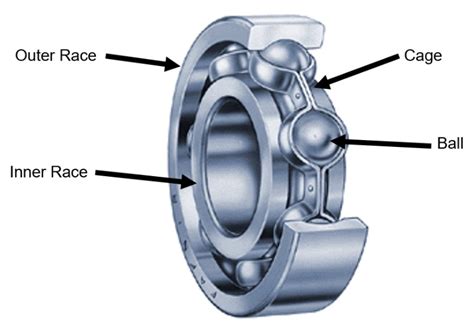Electric Motor Bearings: The Heart of Your Motor's Performance
Electric motors are essential components in various industries, powering everything from industrial machinery to household appliances. bearings play a crucial role in the efficient operation of these motors, ensuring smooth rotation and reduced friction. Understanding the importance and types of electric motor bearings is vital for maintaining optimal performance and extending the lifespan of your equipment.
Types of Electric Motor Bearings
Electric motor bearings come in various types, each suited to specific applications and operating conditions.
-
Ball Bearings: The most common type, ball bearings use small, rolling balls between inner and outer races. They offer low friction and good speed capabilities.
-
Roller Bearings: Similar to ball bearings, roller bearings use cylindrical rollers instead of balls. They can handle heavier loads and provide increased stability.
-
Tapered Roller Bearings: Designed for applications with high axial and radial loads, tapered roller bearings have conical rollers that provide excellent load-carrying capacity.
-
Sleeve Bearings: Also known as bushings, sleeve bearings consist of a cylindrical surface that rotates within a corresponding housing. They offer low friction, high load capacity, and require less maintenance.
Importance of Electric Motor Bearings
Bearings are critical to the efficient operation of electric motors. They perform the following essential functions:

-
Reduce Friction: Bearings minimize friction between rotating components, allowing for smooth operation and energy efficiency.
-
Support Loads: They support the weight of the motor's rotating parts, ensuring proper alignment and preventing shaft damage.
-
Control Vibration and Noise: Bearings absorb vibrations and reduce noise generated by the motor, contributing to a quieter operating environment.
-
Extend Motor Life: By reducing friction and wear, bearings extend the lifespan of the motor by minimizing component damage.
Selecting the Right Electric Motor Bearings
Choosing the appropriate bearings for your electric motor is crucial. Consider the following factors:
-
Load Capacity: Determine the radial and axial loads the bearings will experience to ensure they have sufficient load-carrying capacity.
-
Speed: Consider the motor's operating speed and select bearings rated for the required speed range.
-
Operating Environment: Consider factors such as temperature, moisture, and contamination levels to select bearings with suitable materials and sealing.
-
Lubrication: Decide on the type of lubrication required, as this affects bearing life and maintenance intervals.
Maintenance and Troubleshooting
Regular maintenance is essential for optimal bearing performance. Follow these tips:
-
Lubrication: Lubricate bearings according to the manufacturer's recommendations to reduce friction and extend bearing life.
-
Inspection: Regularly inspect bearings for wear, contamination, and noise to identify potential problems early.
-
Replacement: Replace worn or damaged bearings promptly to prevent further damage to the motor.
Common Mistakes to Avoid
-
Overlubrication: Excess lubrication can attract contaminants, reduce bearing efficiency, and shorten bearing life.
-
Ignoring Maintenance: Neglecting regular maintenance can lead to bearing failure and costly repairs.
-
Using the Wrong Bearings: Selecting bearings with insufficient load capacity or speed rating can compromise motor performance and reliability.
Advanced Features
Modern electric motor bearings offer advanced features that enhance performance and extend bearing life.

-
Ceramic Bearings: Ceramic bearings are highly resistant to wear and corrosion, making them suitable for harsh operating environments.
-
Self-Lubricating Bearings: These bearings contain solid lubricants that reduce the need for external lubrication, minimizing maintenance requirements.
-
Condition Monitoring Sensors: Some bearings incorporate sensors that monitor factors such as temperature, vibration, and speed, providing valuable data for predictive maintenance.
Humorous Stories and Lessons Learned
Story 1:
A factory manager was frustrated with the constant bearing failures in his motors. After replacing several bearings, he finally realized that the problem was not the bearings but the misalignment of the motor shafts. The lesson? Proper alignment is crucial for bearing longevity.

Story 2:
A technician was tasked with inspecting a motor bearing. He didn't pay attention to the manufacturer's lubrication instructions and over-lubricated the bearing. The result? The excessive grease attracted dirt and debris, causing the bearing to seize and damage the motor. The lesson? Follow lubrication instructions carefully.

Story 3:
A team was installing new bearings on a critical motor. They forgot to tighten the bearing retainer properly. As the motor was running, the retainer came loose, causing the bearings to slide out of place and seize. The lesson? Pay attention to every detail during installation.
Conclusion:
Electric motor bearings play a vital role in the performance, reliability, and lifespan of electric motors. Understanding the different types, importance, selection criteria, and maintenance practices is essential for optimizing motor operation. By making informed decisions and avoiding common mistakes, you can ensure that your electric motors run smoothly and efficiently, maximizing productivity and minimizing downtime.
References:
- https://www.engineersedge.com/bearing_selection/bearing_types.htm
- https://www.timken.com/en-us/products/bearings/
- https://www.skf.com/group/products/bearings-units-housings/bearings/rolling-bearings

